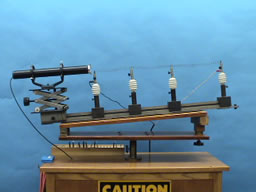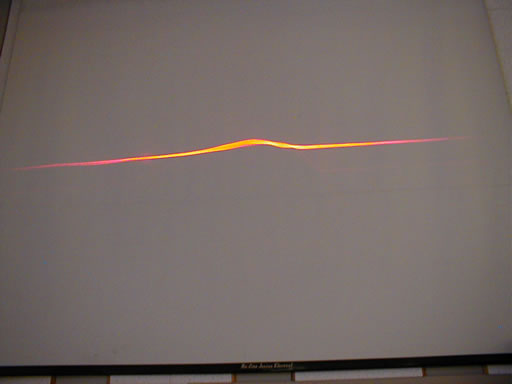Demos: 7A-20 Hot Air Refraction


Directions: Turn on the laser to project the horizontal line on the far wall. (You might need to adjust the cylindrical lens up or down a bit.) The beam should be passing just above the wire coil. Slowly turn up the rheostat until the wire starts to glow red. (Do not go beyond this point significantly or you will likely burn out the wire.) Waving a card or fan over the wire will cause further disturbances in the air and create an undulating line on the wall.
Suggestions for Presentation: Ask the students if they have ever observed the distortions associated with the air over a hot pavement or above the desert sands, etc. Discuss what causes a light ray to change direction, other than reflection. (There must be a change in the index of refraction.) The heated air causes turbulence that is sufficient to create considerable changes in the index of refraction locally. The air outside this area is fairly stable and does not undergo index changes of a magnitude to be readily observable.
Applications: Hot air distortions around roads, radiators, beaches, etc. The twinkling of stars.
Last Updated: Nov 30, 2023 11:25 AM